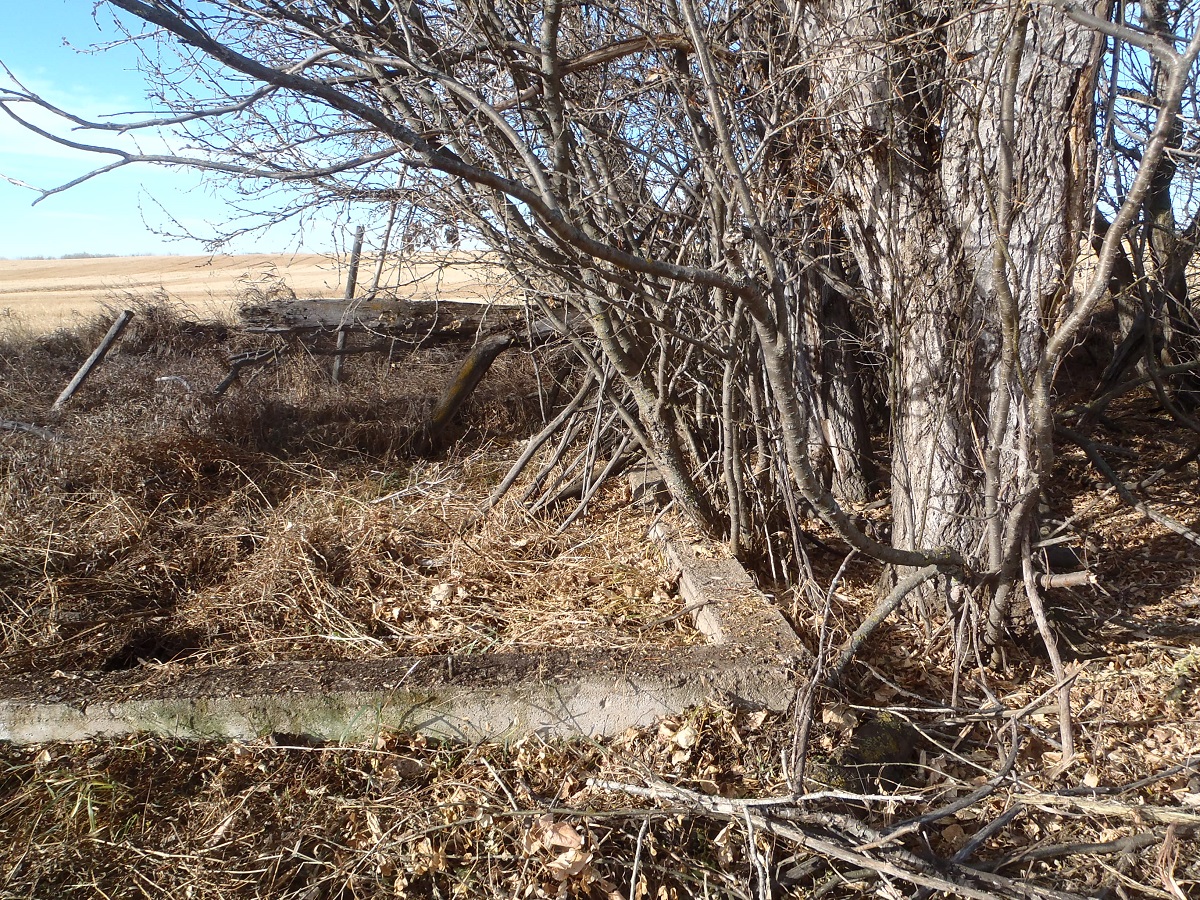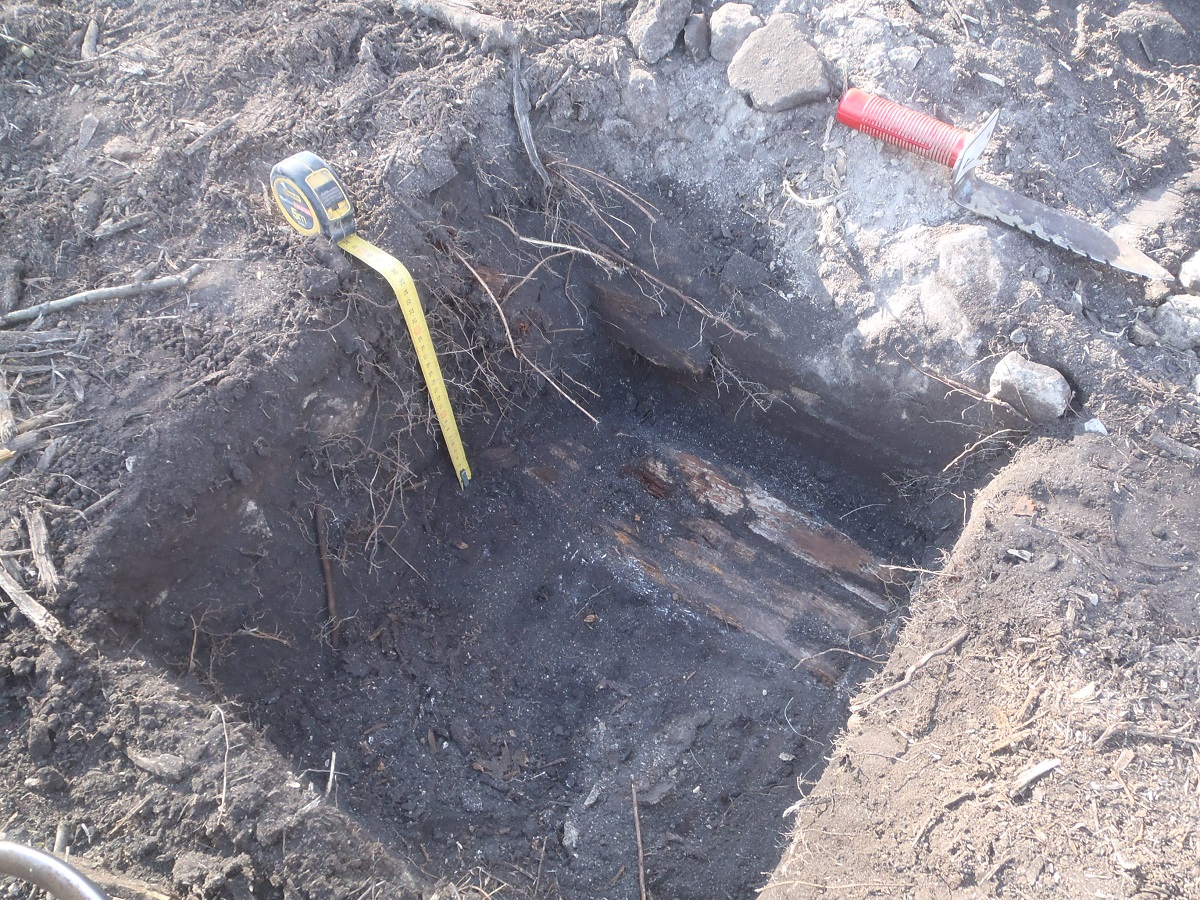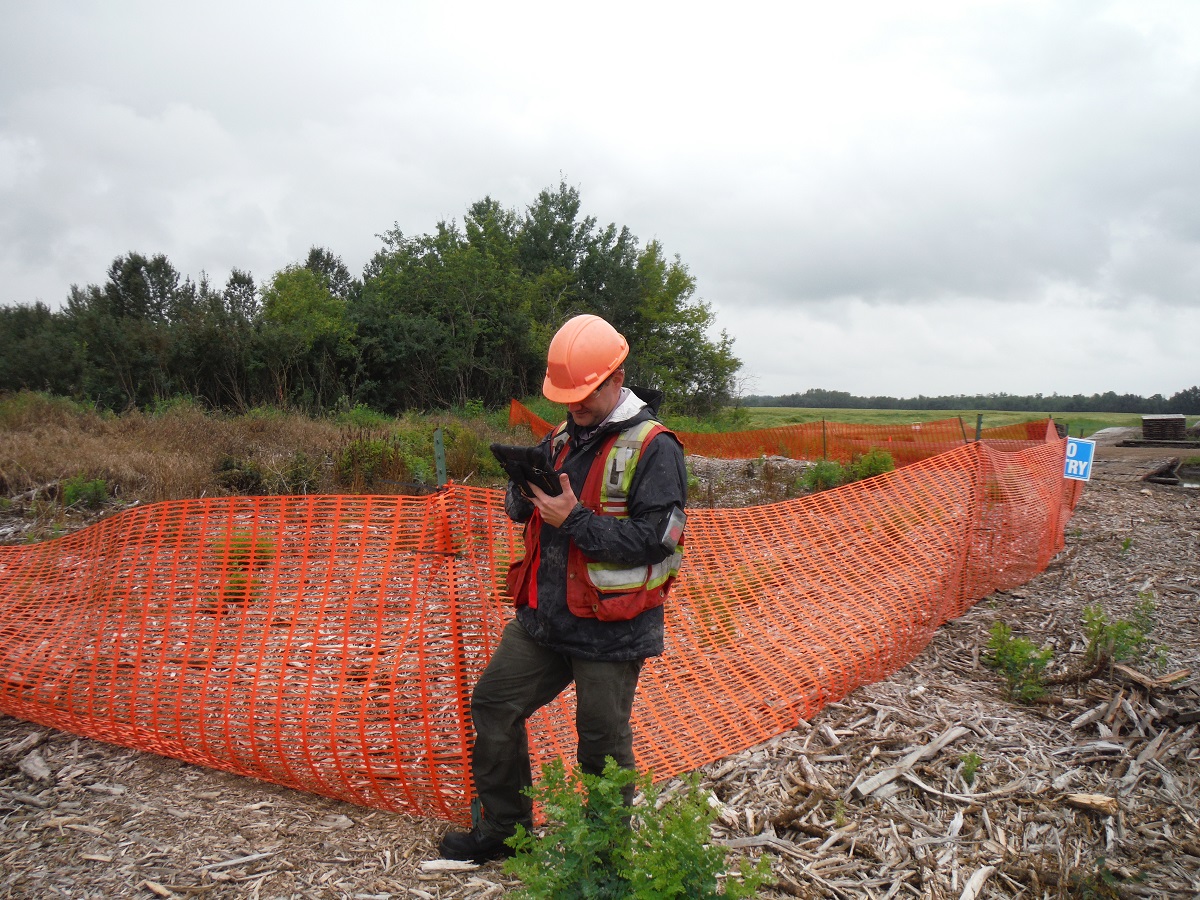Post Category : Field Life Local Archaeology
Kolomea School
In 2013 Tree Time archaeologists got a chance to work on a relatively rare type of historic period site in Alberta: a historic schoolhouse. The Kolomea school site was brought to the attention of Tree Time Services by construction personnel for a transmission line project. The site consists of three concrete foundations surrounded by non-native bush. Local informants identified the foundations as a school, a teacher’s residence and a stable where students’ horses were housed during school hours. The school served the nearby Ukrainian community and was named Kolomea after a region in Ukraine.

Tree Time undertook investigations at the school with the goals of assessing if the site was a historic resource; confirming the function and age of the foundations; determining the significance of the site to the surrounding community and to the province, and making recommendations regarding future management of the site. These normal objectives of Historic Resource Impact Assessment were complicated by the fact that construction had already started, and the site was partially inside the transmission line right of way.
To confirm the function and age of the foundations we referred to archival airphoto searches, historic land title searches, local history books, provincial archive searches, interviews with local informants and current landowners, and conducted small test excavations.
Using the Glenbow Museum Archives School Districts Database website we were were able to perform a search by legal land description to find out which school district our site was located within. This search indicated that the site was the Kolomea school. Having the name of the school helped us to pursue the next step – an historic land title search which further corroborated what we had learned through the Glenbow Museum Archives.
Local histories and archival searches through the Provincial Archives of Alberta confirmed that a one-room schoolhouse was built at this location in 1906. These records indicated that the one-room schoolhouse was replaced with a larger school in 1929. The construction date of 1929 for the large school confirmed that the site is a historic resource. We were able to find archival photos from the 1920s of the one-room school house and one from the 1930s showing the larger school. The photo of the larger school matches the location and general shape of the large foundation currently at the site.
To test and corroborate the archival and historical information, and to confirm the functions of the three buildings, four 50 x 50 cm test units were excavated at each of the foundations. These excavations resulted in the recovery of historic construction debris (concrete, brick, nails, window glass), buttons, fragments of glass vessels, porcelain, clinker (slag from coal heaters in the buildings), bone (probably burned in the stoves), tin and possibly bakelite (early plastic). Excavations in the house foundation uncovered a possible floor board. At the start of the project we had identified the northernmost foundation as the barn or stable, but owing to the discovery of a potential floor board during the excavation of this foundation we determined that it was more likely the house foundation and the southwestern foundation was the stable. We were hoping to find artifacts like jacks or marbles that would clearly represent the presence of children, but we had no luck in that department.

Historic documents indicate that the school was closed in 1952 and the building was moved to Lavoy, AB by the Catholic Church, where it still functions as a church today. The barn was also moved from its original location but is still located on the same quarter section. The teacher’s residence appears to have been moved or demolished, but we didn’t find any records of its history. Archival airphoto searches and interviews with local informants were not successful in identifying the location of the original one-room school house. We suspect that the foundation that has been identified as the house might have been the original one-room schoolhouse which was re-purposed as a teacher’s residence when the new school was built.
Kolomea school is a unique site that is strongly associated with the Ukrainian settlement of northeast central Alberta and can shed light on the poorly-documented lives of rural children in the mid-20th century. While we didn’t find any direct evidence of children at the site (except a few lost buttons) further explorations at the site would likely turn up some interesting and nostalgic material. The site was protected by temporary fences around the foundations while construction was completed to avoid any accidental impacts. The government of Alberta has granted the site an Historic Resource Value of 4h,a (historic and archaeological). This means that no more development can happen at this site without archaeologists doing a lot more work here.




